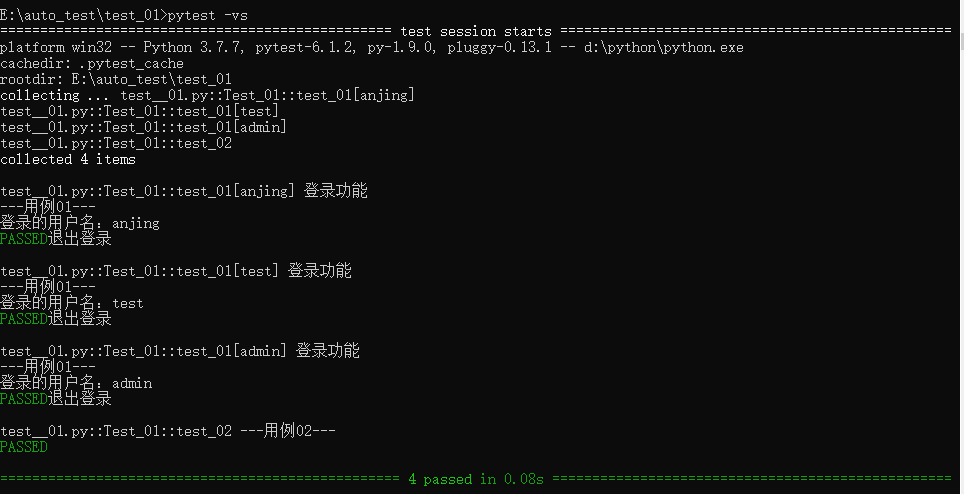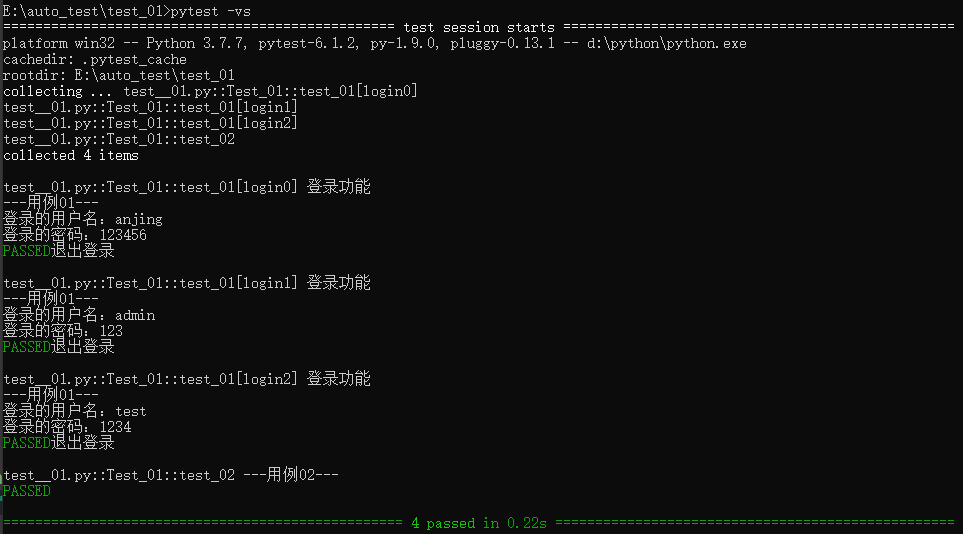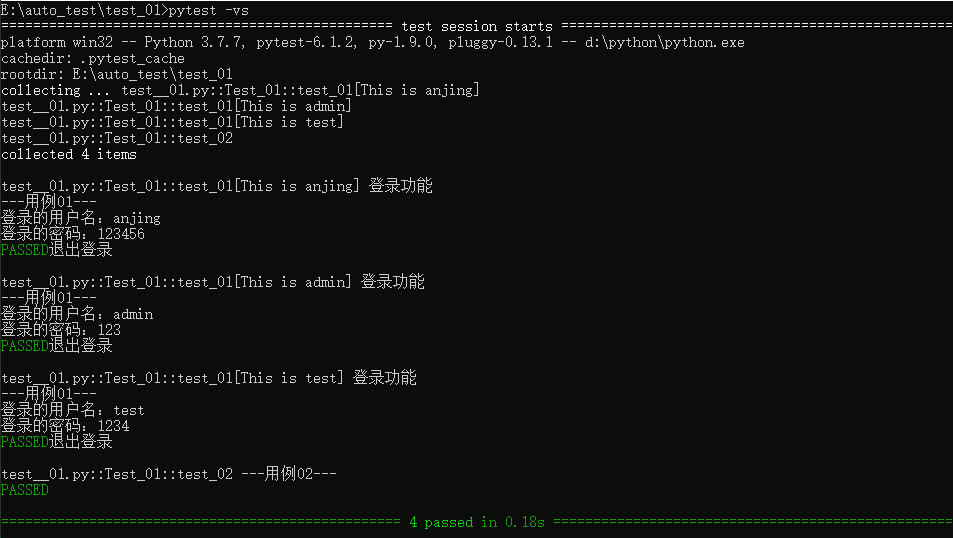前言
前面介绍了,可以使用parametrize来做参数化,非常的方便,其实fixture也可以用来做参数化,灵活性更高。
fixture参数化
fixture前面介绍的时候说过一共有5个参数分别是:name,scope,params,autouse,ids。每个参数都会介绍到,今天主要介绍params参数,这个参数主要用来做fixture的参数化内容。
这里需要用到一个参数request,用来接收fixture返回的结果。通过request.param来返回参数内容。
import pytest data = ['anjing', 'test', 'admin'] @pytest.fixture(params=data) def login(request): print('登录功能') yield request.param print('退出登录') class Test_01: def test_01(self, login): print('---用例01---') print('登录的用户名:%s' % login) def test_02(self): print('---用例02---') if __name__ == '__main__': pytest.main(['-vs'])

通过执行结果可以发现fixture完成了参数化内容,有的小伙伴们可能会问了,如果是多个参数怎么用呢?这里安静在通过登陆案例在来介绍下多个参数
fixture传入多个参数
这里我们需要了解到通过fixture传参,是通过 request.param 进行整体接受到,如果参数多的话,需要request.param进行单独取出。
import pytest data = [{'user': "anjing", 'pwd': "123456",}, {'user': "admin", "pwd": "123"}, {'user':"test", 'pwd': '1234'}] @pytest.fixture(params=data) def login(request): print('登录功能') yield request.param print('退出登录') class Test_01: def test_01(self, login): print('---用例01---') print('登录的用户名:%s' % login['user']) print('登录的密码:%s' % login['pwd']) def test_02(self): print('---用例02---') if __name__ == '__main__': pytest.main(['-vs'])

安静这里就是通过把整体参数全部传出,然后通过request.param作为整体返回,返回的值就是通过login这个函数,然后通过login函数在进行取值,当然也可以在前置工作中进行直接取出来,然后传出时,直接调用
自定义参数信息
fixture的参数化自定义信息和parametrize是一样支持自定义信息的,都是通过ids参数来表示的。
import pytest data = [{'user': "anjing", 'pwd': "123456",}, {'user': "admin", "pwd": "123"}, {'user':"test", 'pwd': '1234'}] @pytest.fixture(params=data, ids=['This is anjing','This is admin', 'This is test']) def login(request): print('登录功能') yield request.param print('退出登录') class Test_01: def test_01(self, login): print('---用例01---') print('登录的用户名:%s' % login['user']) print('登录的密码:%s' % login['pwd']) def test_02(self): print('---用例02---') if __name__ == '__main__': pytest.main(['-vs'])

通过return返回参数
上面介绍的是通过正常的request进行传参,也可以通过return直接进行返回参数,这里返回参数只能用来单个参数,不能使用参数化,只是简单介绍fixture的这个功能
import pytest @pytest.fixture() def login(): print('完成登录') a = {'user': "anjing", 'pwd': "123456",} return a class Test_01: def test_01(self, login): print('---用例01---') print(login) def test_02(self): print('---用例02---') if __name__ == '__main__': pytest.main(['-vs'])

简单的介绍了fixture的参数化内容,大家可以和parametrize进行做对比使用,具体哪个好用,大家可以进行使用那个。如果有更好的使用方法,可以下方留言进行交流哦